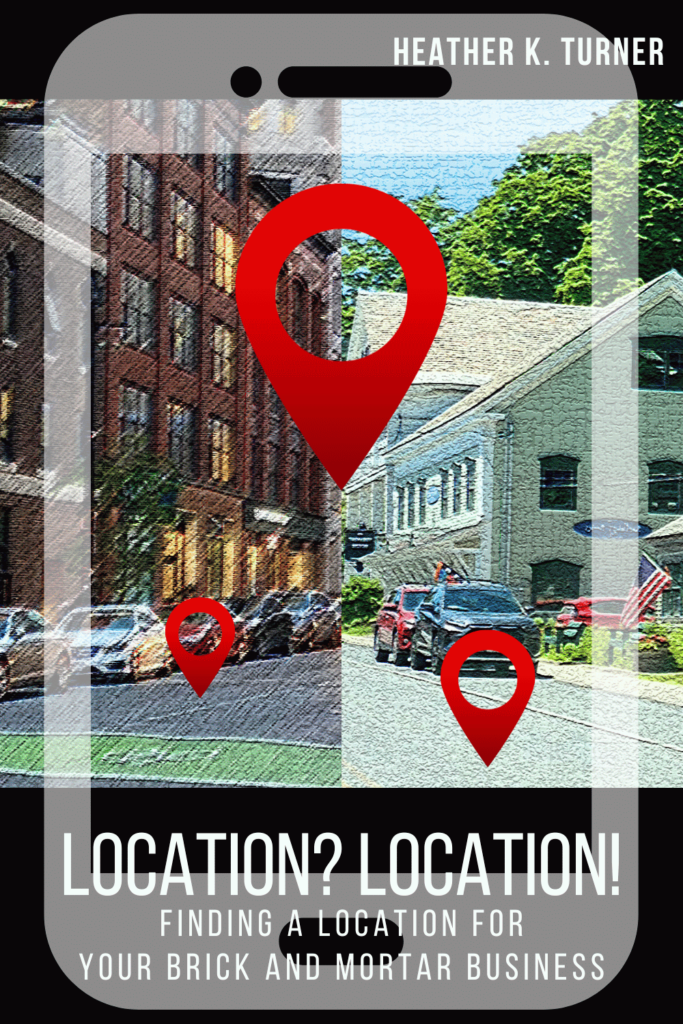by Heather T. | Aug 30, 2024 | Business, Marketing, Observations, Operations, Reputation Management
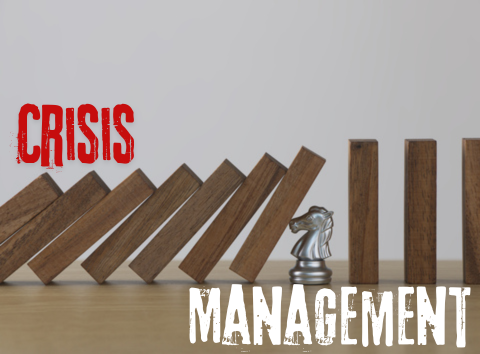 Back in February of 2020, I wrote a post about a crisis management plan for social media (A Social Media Strategic Plan for Crisis. An Outline for Bed and Breakfasts and Other Businesses) I had written it a few years back for a business client and yesterday did a workshop on Reputation Management and was going to share the checklist I had made up.
Back in February of 2020, I wrote a post about a crisis management plan for social media (A Social Media Strategic Plan for Crisis. An Outline for Bed and Breakfasts and Other Businesses) I had written it a few years back for a business client and yesterday did a workshop on Reputation Management and was going to share the checklist I had made up.
In reviewing it, a LOT has changed in just four years (Yikes!), so I updated it with some new information, and wanted to put the new version out there so if it’s useful to anyone, I hope it is of help.
My feeling is that with all the shoot first and ask questions later (i.e. “your business did this” and it’s a hot button for people, but that may not be actually the real story) that goes on in social media and online reviews and discussion, it’s better to be prepared in case something does happen, with the hope it never does, then try to scramble to regroup after the fact.
Please keep in mind the reference links to Facebook and other social links change every few years, but they are up to date as of now. In the future, if a link has moved, it’s best to go into every platform’s help section and search for the topic and you will typically find an updated link.
The Chess Piece
The horse chess piece image speaks to me about this topic because the piece is probably, in my opinion, one of the strongest and can be used the most strategically, and it moves the most unconventionally compared to the other pieces. Many chess players consider it as a key piece in winning a game, but can also be one of the weakest. Because knights are bound by a fixed number of movements, they are particularly vulnerable to traps.
When dealing with an online social media crisis, a business can be the knight that saves itself or it can fall into the trap of handling things not the right way, making things worse OR getting complacent and thinking a crisis has passed and stops monitoring, or stops being prepared to deal with if is not “done”.
You can download the plan in (PDF) Social Media Strategic Plan for Crisis or MSWord Social Media Strategic Plan for Crisis or Google Docs (make a copy or download) Social Media Strategic Plan for Crisis. This is an outline and checklist to be changed, or tweaked as needed, and to customize it to your own business.
by Heather T. | Aug 8, 2024 | Books, Business, Business Location, Starting a Business
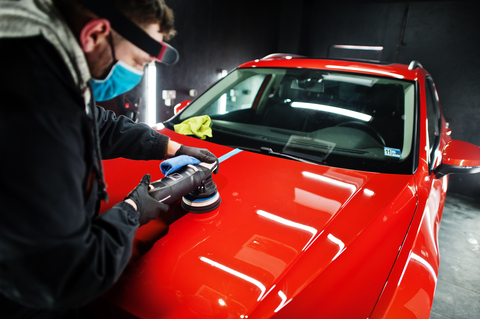 Find a Location for Your Brick and Mortar Business was just published and one of the things that I thought might be useful to do was to go into a little more detail about some individual types of brick and mortar businesses, and some specifics on what to look for when doing a location assessment.
Find a Location for Your Brick and Mortar Business was just published and one of the things that I thought might be useful to do was to go into a little more detail about some individual types of brick and mortar businesses, and some specifics on what to look for when doing a location assessment.
For example, scouting a location for a new hair salon has its own variables to consider above and beyond the information in the book, as does starting a auto detailing business and while most things (in the book) are applicable to any business, I wanted to elaborate more and drill down a bit for some additional things that can help any new or relocating brick and mortar business get started when doing a location assessment.
I originally had grand plans to do these as part of the book, but with all of the different types of brick and mortar businesses out there to go over, I probably would have finished it in the next century or so and at that point we might be talking about which planet to start a business on, not which street corner. 🙂
I take requests, so while I’m going to bounce around in between business types, if you are just starting a business and would like some pointers about what to look for when doing your location assessment please reach out. Information and feedback is free but I can’t promise to not make a blog post out of it, I promise to not share any personal/business information unless you are ok with it first though.
Now onto details.
Suppose you want to start an Auto Detailing business?
Here are a few tips in addition to our recent book that might be helpful in looking for a location.
Ensure the site is easily accessible for customers and provides ample parking and parking spaces are wide enough so that people with higher end cars won’t be afraid to park in your lot. Your target market is typically going to people with a bit of disposable income who can afford to have their car detailed and tight parking which can cause door dings and other body damage can be a detractor especially for repeat customers.
Opt for a location that allows you to maintain a clean, professional appearance to attract clients. Your service is cleaning/detailing cars, a brick and mortar location that offers easy clean-up and a facade with bright colors and lots of large clean windows can help appeal from a visual standpoint plus showcase any luxury or antique cars you might have detailed while they are waiting for customers to pick them up. Don’t forget about what the neighboring buildings and businesses look like as well.
Ensure good signage opportunities to promote your detailing services. While car detailing isn’t typically a walk in proposition, you do want to make it easy for customers who have made appointments to find you and depending on your location, traffic speed on the road and other factors, how far away can people see your sign, read it and then have time to pull into your business comfortably?
Consider locations near complementary businesses, like car dealerships (new and used) or service centers, to attract more clients. Depending on your location (near water bodies or tourism areas), you may also want to consider a lot size and entrance that can accommodate customers bringing in boats (which may be detailed prior to or after winter storage) and RVs.
Auto detailing requires large amounts of water for detailing vehicles. The location must have a reliable and adequate water supply to support the business operations. The location should have access to a consistent and high-volume water source and be able to properly manage and dispose of the wastewater generated from the business, either through connection to a municipal sewer system or the ability to install an on-site wastewater treatment and disposal system.
We would suggest doing a water quality test as well, hard water can leave spots and mineral deposits on vehicles. If the location checks all the boxes but has hard water, make sure you estimate what a water treatment system will cost you to install and upkeep when doing your business plan and projected financials.
Don’t forget to check zoning regulations to make sure the location allows for this type of business.
One additional tip, additional markets to promote to that may be good customer bases are car sellers who want to get their vehicle in tip top shape prior to selling private sale, or to a dealer, so it has better eye appeal. If this is a market you want to want to pursue, an value add on would be a service taking professional pictures of the vehicle for sale and assisting with a good sales writeup for people considering private sales of their vehicles.
by Heather T. | Jul 12, 2024 | Books, Business, Observations, Operations
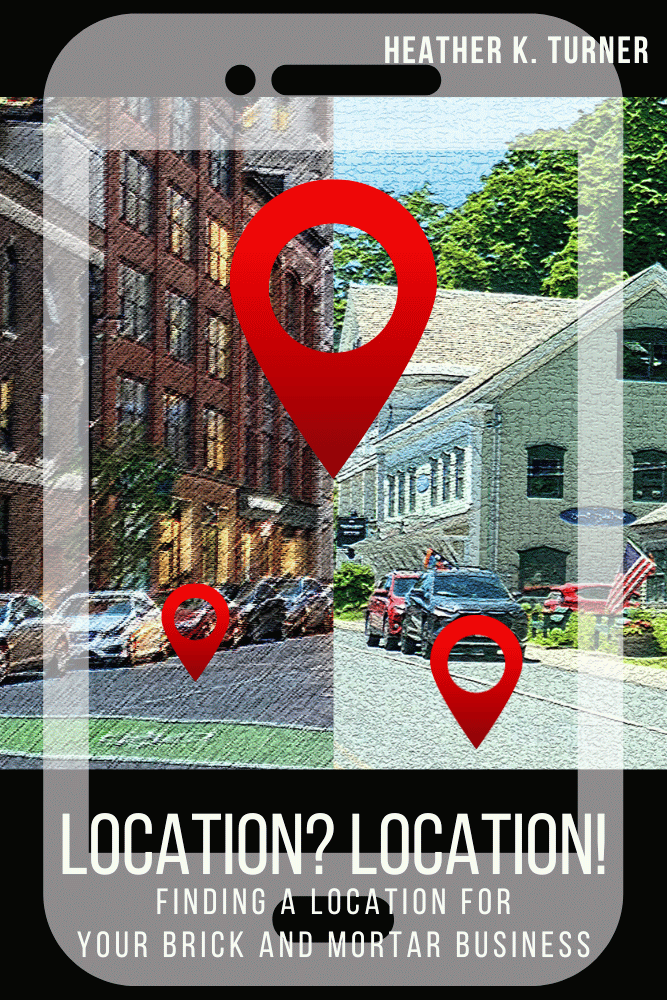 Are you interested in being an ARC Reader (ARC stands for Advanced Review Copy) for new books? These will primarily be business books, but we do have one fiction book in the works as well.
Are you interested in being an ARC Reader (ARC stands for Advanced Review Copy) for new books? These will primarily be business books, but we do have one fiction book in the works as well.
Our next book, Location? Location! Finding a Location for Your Brick and Mortar Business, will be ready to read in mid to late September 2024, with another book on marketing to follow in midwinter.
Signing up to be an ARC reader is an opportunity to read new books before they are “officially” published online and before anyone else.
In return, you agree to provide an honest review on Amazon to help others decide whether the book is worth reading or not. You need to be a current Amazon customer who has spent at least $50 previously to be able to leave a review. If you don’t have an Amazon account or have never used it, we also appreciate reviews on Goodreads. Amazon review guidelines.
I ask that reviews be honest, while I appreciate that people (especially ones that know me) might feel reluctant to leave anything critical on a review. Real reviews do help. And you can be kind AND be constructive at the same time. There is a great post on leaving reviews (positive and not so much) which is worth a read. Constructive feedback IS a gift.
ARC reviews should focus on what makes the book enjoyable or hopefully, in the case of most of my books, educational and valuable to new and existing business owners, while avoiding spoilers or major summaries (since most people reading the review won’t have read the book yet).
Talking about things like: was the information useful, easy to understand and did it give actionable tips or information can help new readers decide if the book suits their tastes and more importantly their informational business needs.
The Book will be sent in PDF format digitally by email about 3 weeks before official publication.
If this is of interest, please fill out the form to sign up! And THANK YOU!
Other Ways You Can Help:
- The #1 way you can help is to leave a review!
- Post a picture or quote from one of my books and tag me on Facebook or LinkedIn.
- Recommend one of my books on Goodreads.
- Pin or tweet your favorite of my books.
- Share one of my books on Facebook, Instagram or LinkedIn.
- Refer a friend that might find one of the books useful, especially if they are starting a business or in business and might need some help.
Location? Location? Finding a Location for Your Brick and Mortar Business overview:
Ditch the guesswork and navigate the key factors every aspiring business needs to consider before they sign on the dotted line for a property.
Finding a Location for Your Brick and Mortar Business is your roadmap to a thriving business reality. Order your copy today and turn your entrepreneurial dreams into brick-and-mortar success!
Whether you’re dreaming of opening a hair salon, a fitness center or a garden supply center, Finding a Location for Your Business offers the tools and knowledge to find a location that meets your needs and maximizes your businesses potential for success. Discover the secrets to making informed decisions and turning your entrepreneurial dreams into reality.
This comprehensive book covers essential topics such as community assessments, competition research, zoning and planning considerations, traffic counts, crime and safety, parking and traffic flow, employees and housing and much more.
Whether you’re a seasoned business owner or a newcomer to business ownership, this book provides valuable insights, and a detailed location and assessment checklist to help you make informed decisions.
by Heather T. | Feb 12, 2024 | Business, Food, Marketing, Observations, Operations, restaurants
 Recently there was an article on Eater. “Why not bring takeout containers to restaurants?” and I thought, wow this is such a great idea (not rocket science obviously) but I should start doing this. What a great way to save the environment and, by the way, save our favorite restaurants a few bucks in the bargain.
Recently there was an article on Eater. “Why not bring takeout containers to restaurants?” and I thought, wow this is such a great idea (not rocket science obviously) but I should start doing this. What a great way to save the environment and, by the way, save our favorite restaurants a few bucks in the bargain.
Which, of course, led to the inevitable 2 AM neurodivergent thought, OH!, how can a restaurant leverage this? There must be restaurants doing this already, and of course, there were and there are. Restaurants give discounts to diners who bring their own dishes (2019) and many more. One thing that I noticed though about the restaurants and other food service operations that offered this is there didn’t seem to be a ton of thought into “targeted” getting people back in the door. Some offered discounts off of a future meal, some off of a current meal, some free refills (for beverages) but not much real upselling.
From a customer funnel point of view, if you want to think about getting repeat customers back in the door, what’s the incentive to get them back in PLUS the incentive to spend more money?
I’d love to see a restaurant out there (and maybe there is, let me know!) who would offer the incentive “BYOC (Bring Your Own Container)” and get a voucher/coupon for a free coffee or tea and our signature dessert.
Why that? Coffee or tea doesn’t cost most to provide and if you created the incentive wisely a signature dessert could cost a few dollars or less to make. Tiramisu is cheap to make, so is a scoop of homemade (or a good prepared) mousse with some flavored whipped cream to zip it up. Dessert has a much higher profit margin on it typically than an entrée or appetizer.
If you just give them a discount or small incentive, it doesn’t do much for repeats, it can help, but what’s the upsell part of it?
If you get them to come in and get drinks, maybe an appetizer and a couple of entrees (make the must order an entrée as part of the small print on the coupon), it’s an incentive to get people in the door and spent money first.
Even if it’s a couple who come in regularly and they bring two takeout containers, give them two vouchers. If you look at it from the perspective of how is any different from giving them a $10 off coupon their next meal, it is different because your incentive is to give them something for free but they have to spend money first. Even without a couple ordering appetizers, if a couple’s tab is a couple of entrees (mid-priced restaurant average) 17.99 X 2, plus a couple of soft drinks (up the take if it’s beer or wine) 2.50 X 2, and the regular check average is $50.00 and you just “gave away” $3.50 in product, when it boils down to it that’s pretty inexpensive marketing. If your price points for your menu items are higher, the ratios are even better.
You actually get three birds with this: promoting eco-friendly practices, saving money on your own to go containers and getting people in the door for repeat dining. Even if you encourage regulars to give them to others, that’s not a bad thing, it increases brand awareness and you get the same result; you get more people in the door and they order the big-ticket items like entrees (and if your waitstaff is good at the in-person upsell, high profitably drinks).
If you are going to try any incentives like this, make sure they contribute to your bottom line.
I’ve seen too many restaurant coupons that just give a discount with no stipulations on use or no incentive to get people to buy more.
So if you create an initiative to bring in customers, track through what you get out of it. Is it a onetime sale, something that will get people to come in many times or something that will make people spend more money because of the incentive itself?
There were a couple of good articles I came across in searching for restaurants that did have to go container incentives that I think would be worth a read.
How can restaurants take advantage of sustainable packaging?
What Are Reusable Food Container Programs?

By the way, my first book just got released on Amazon this weekend in Paperback and on Kindle! Check it out! Finding a Location for your Restaurant: How to Scout the Perfect Location for your Dream of Opening a Restaurant or other Hospitality Business.
by Heather T. | Feb 7, 2024 | Business, Observations, restaurants
 There are three main types of people who want to open a restaurant.
There are three main types of people who want to open a restaurant.
Those who have been in the industry, usually chefs and cooks (but not always, sometimes it’s front of the house people), those who grew up in a restaurant environment, (i.e. parents or other family members owned or ran a restaurant), and the folks who have fallen in love with the “idea” of owning their own restaurant.
All of them have, and can run and own a successful restaurant, but I have found in 40 years of working in and with the hospitality restaurant that’s it the first two types that have better success and better success long term with running a restaurant.
I’ll be blunt and I am really not trying to talk people out of owning a restaurant, but to be realistic about what someone is getting into if they have never worked in a commercial food service establishment before.
For fans of, “The Bear” TV series while it has many realistic parts to it for at least the back of the house, apart from some glaring errors, (pretty much everyone in the industry knows what ServSafe is, whether or not your state requires it). IMO It’s still not a great representation of actually “owning” a restaurant and ALL that it entails. I think it hits the marks pretty high on the stress, the dynamics and many other things that happen in real life in a kitchen though and it’s worth a watch if you want to open a restaurant and not had ANY prior experience. But it still doesn’t cover many of the realities of the actual operations of a real restaurant, front of the house, back of the house, the day-to-day operations, the financials and the struggles with financials on a constant basis, checking in orders, employee theft, doing inventory on a frequent basis, dealing with difficult customers both online and off literally every day, dealing with vendors, scheduling staff, dealing with seasonal or economic slowdowns, the marketing online and offline, etc. etc. etc……………
While there have been some terrific food movies out there, mainly from the kitchen perspective, I have yet to see a restaurant movie that really truly reflects REAL life running a restaurant and I suspect it’s because no one “really” wants to see what’s behind the scenes on a real day-to-day basis.
It’s scary how much work, how much stress, and how much slog an owner has to get through daily, especially if they are a hands-on owner. Many chefs who become chef owners spend more time managing and dealing with day-to-day problems than cooking and I had several jobs before I got out of the business where I spent more time pushing paper than behind the line. Not fun, take my word for it. My passion is food and while I love excel spreadsheets, I got into the food business because I loved to cook, not because I wanted to become an accountant.
My first book is coming out shortly (Finding a Location for Your Restaurant) and with that I created a series of real life or lets call them, “lets get a reality check”, quizzes, so that people thinking about owning and operating a restaurant (regardless of whether they have experience in a restaurant industry or not) can get an idea of what they know, they need to know and what they WILL run into as an owner or lessee of a restaurant property.
I want to thank several hundred of my friends (both from the industry and from many other walks of life in other industries) for being guinea pigs to test these and get a baseline for the scoring.
Again, these quizzes are not meant to discourage people from wanting to run their own restaurant, but rather to provide some insight into the reality of it and many of the things that you, as an owner, WILL encounter.
I mention this in my book, but it bears mentioning here. Back in the mid 1990’s I considered buying and running a restaurant and in hindsight, I am so very, very, VERY glad I did not. It would have failed in under a year. With all that I know now, I look back at that person, who had a lot of cooking experience and some management experience and I can snark at myself honestly and say, “oh you foolish, foolish child”. because I had no clue at all about what running and owning a restaurant and doing it successfully really entailed.
Interested in trying the quizzes out?
by Heather T. | Nov 30, 2023 | Business, Observations, Operations, restaurants
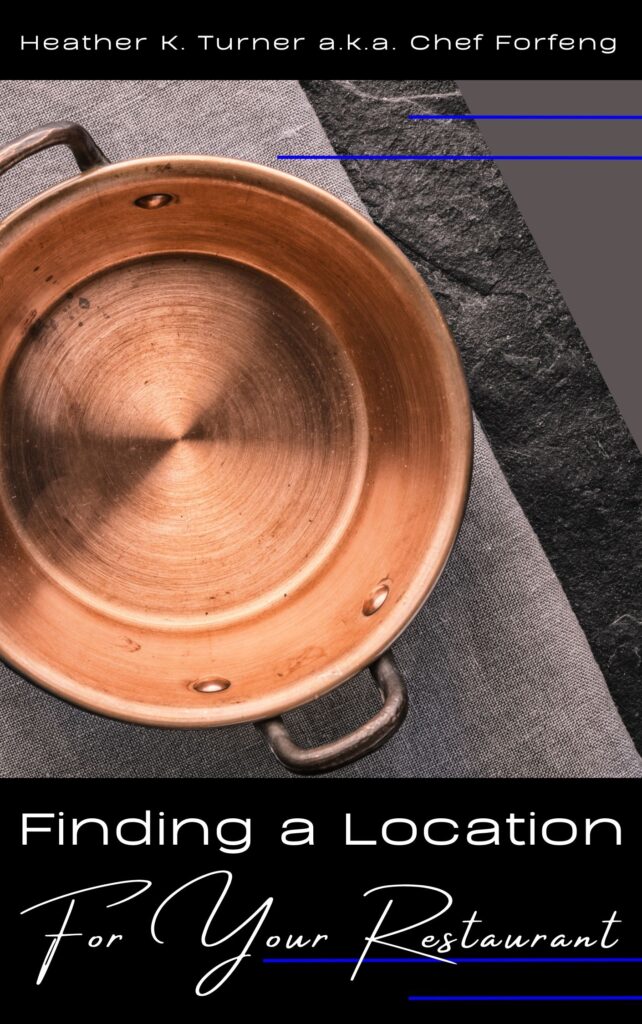 I’m pretty excited. I’ve been working on a how-to book series, and my first book will be released at the end of December!
I’m pretty excited. I’ve been working on a how-to book series, and my first book will be released at the end of December!
Future ones will all be restaurant-oriented and will cover: writing a business plan, writing a marketing plan, how to do competition research, dining and kitchen flow, writing an operations plan, menu development, dealing with difficult customers both online and offline, reputation management, the art of the upsell, managing and dealing with employee theft and managing and keeping your employees.
My first book, Finding a Location for Your Restaurant will cover:
- Community Assessments
- Who Is Your Market?
- Competition
- Parking including Limited Parking, Shared Parking, Street Parking, Motorcycle and ADA Parking, Parking Fees, Employee Parking and Delivery and Pickup Parking
- Lot and Road Conditions
- Flooding and Flood Zones and Other Natural Disasters
- Foot Traffic
- Traffic Counts
- Vendor Access and Who Delivers?
- Noise Considerations
- Crime and Safety
- Catering In-House or Off-site Considerations
- Landscaping
- Zoning
- Outdoor Dining
- Signage
- Taxes and Tax Assessment History
- Business Turnover
- Employee Housing
- In-person Research
Most of the how-to books I’ve come across on opening a restaurant don’t go into depth about everything you should be really looking at when you assess a restaurant location.
I’m also almost finished with a quiz with scoring that I think will help guide people who want to open a restaurant. Inspired by Steve Strauss’ Entrepreneurship Readiness Quiz, which we use in SCORE (with Steve’s permission), I am working on a “Do you REALLY think you are ready to own your own restaurant?” Instead of 20 questions, it is going on about 100 questions+ so that someone, whether they have had restaurant experience or not, can drill down on not just whether they are ready or not but if they do want to start the business; this is where they will find the holes and knowledge that they either lacking and need to learn about or make sure they hire key people with those skill sets.
 Back in February of 2020, I wrote a post about a crisis management plan for social media (A Social Media Strategic Plan for Crisis. An Outline for Bed and Breakfasts and Other Businesses) I had written it a few years back for a business client and yesterday did a workshop on Reputation Management and was going to share the checklist I had made up.
Back in February of 2020, I wrote a post about a crisis management plan for social media (A Social Media Strategic Plan for Crisis. An Outline for Bed and Breakfasts and Other Businesses) I had written it a few years back for a business client and yesterday did a workshop on Reputation Management and was going to share the checklist I had made up.


 Recently there was an article on Eater. “
Recently there was an article on Eater. “

 I’m pretty excited. I’ve been working on a how-to book series, and my first book will be released at the end of December!
I’m pretty excited. I’ve been working on a how-to book series, and my first book will be released at the end of December! 